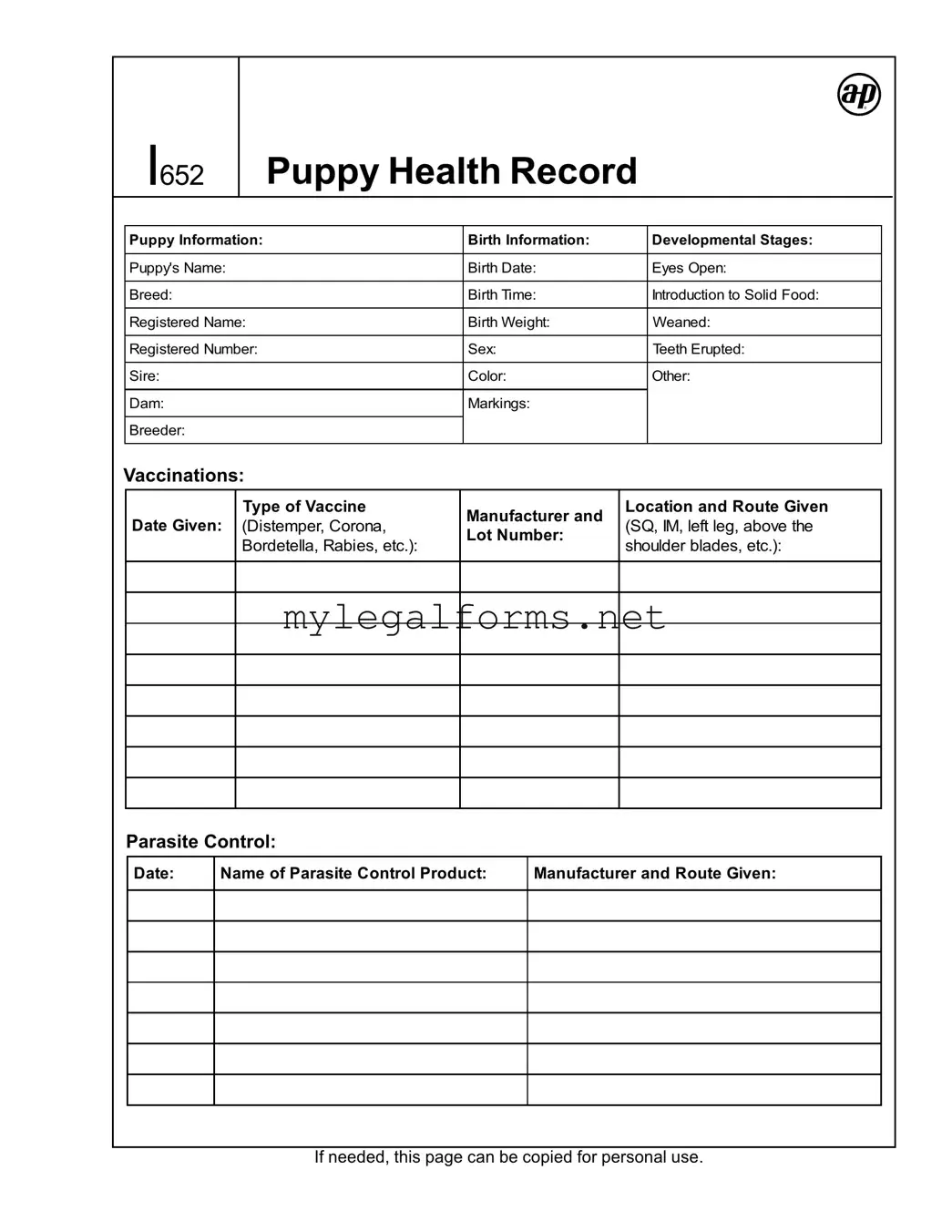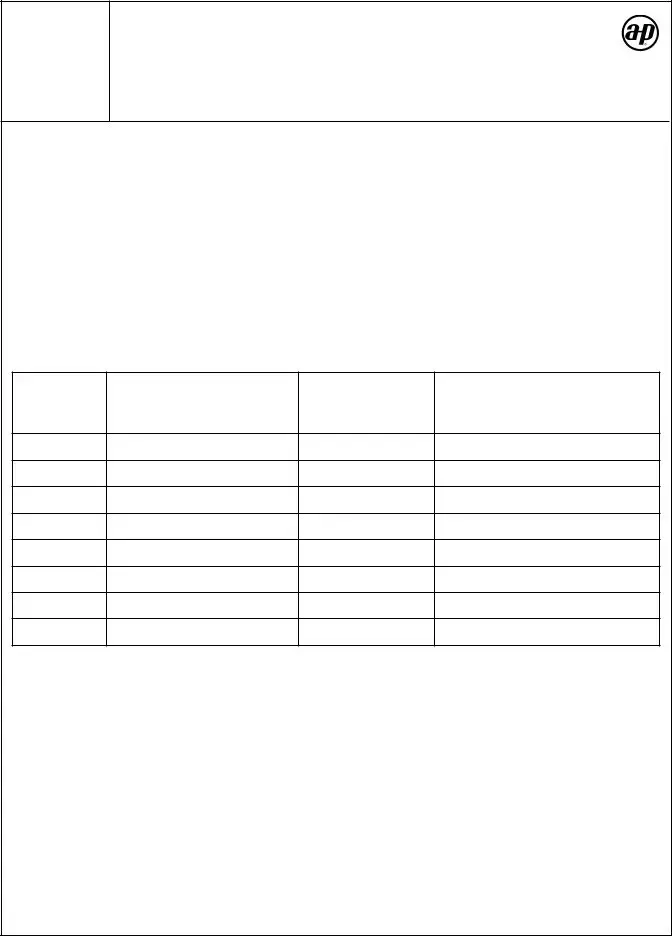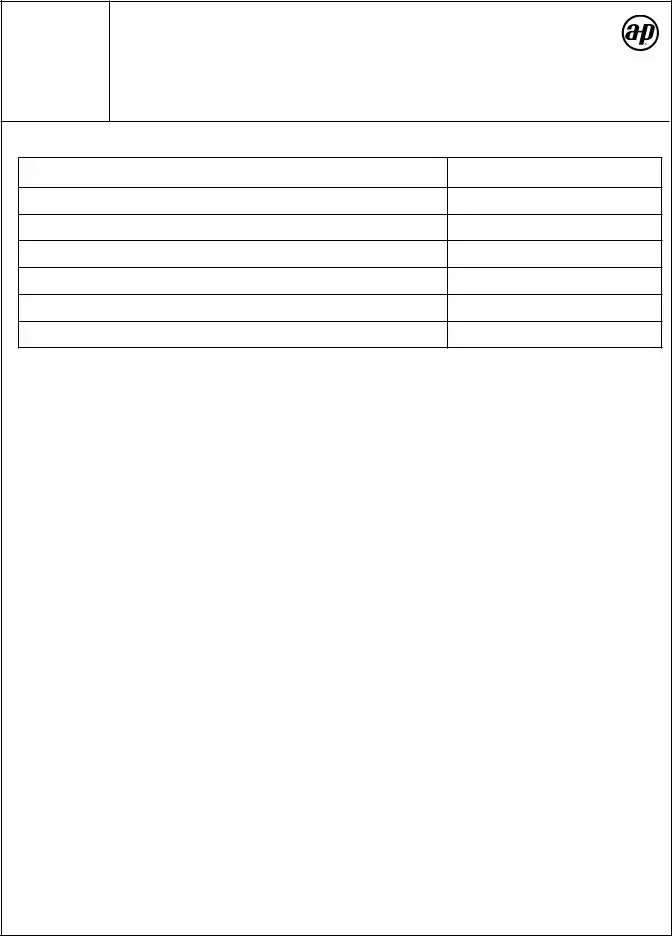The Puppy Health Record form serves as a comprehensive tool for tracking the essential health milestones of a puppy from birth through its early developmental stages. This form includes vital information about the puppy, such as its name, breed, birth date, and weight, as well as the names of its parents, the breeder, and specific markings. Tracking the puppy's health journey is crucial; therefore, the form documents significant vaccinations, including types and dates administered, along with details about parasite control measures. Owners can also note any examinations or procedures performed by veterinarians, ensuring that all findings and comments are recorded for future reference. Additionally, a schedule of events outlines key milestones, such as the introduction of solid food, initial vaccinations, and spaying or neutering, helping owners stay informed about their puppy's health needs. The form is designed to be user-friendly, allowing for easy copying and personal use, making it an invaluable resource for new puppy owners aiming to provide the best care possible.


